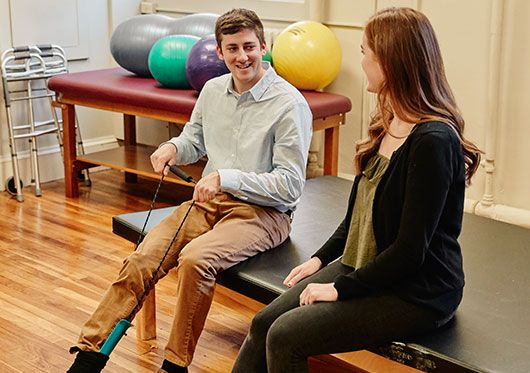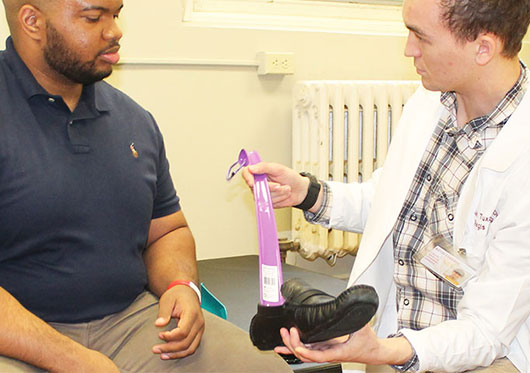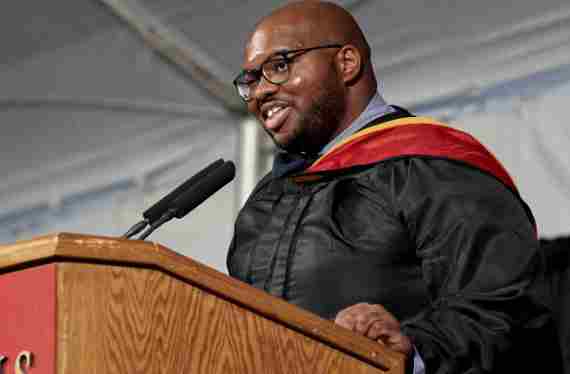It is not uncommon for occupational therapy and physical therapy to be confused with each other, particularly by students who are considering a field in the medical industry. It’s understandable: In addition to having similar names, the fields are also similar in other ways.
There are, though, key differences that make occupation therapy and physical therapy distinct industries, requiring unique education and training. If you are considering a career in either of the fields, it is incredibly important that you understand these differences so that you can choose the program and career that is right for you.
Below, we explore the differences between occupational therapy and physical therapy and offer advice that you can use to determine your best path forward.
Occupational Therapy vs. Physical Therapy
The primary difference between the two fields is that physical therapy helps patients cope with pain, increase range of motion, improve endurance, and develop gross motor skills; occupational therapy focuses more on how clients perform activities and roles that are most important to their daily lives, including assessing and treating physical, psychosocial, behavioral, cognitive, or sensory skills.
There are, of course, more differences between the two professions than what is discussed above. Below, we delve into these differences in greater detail.
What is Occupational Therapy?
Occupational therapy (OT) focuses on treating patients who are recovering from a range of maladies (physical, mental, developmental, and emotional) which impact the person’s ability to perform daily activities.
Occupational therapists will most often work with individuals who exhibit:
- Birth injuries or birth defects
- Sensory processing disorders
- Traumatic injuries to the brain or spinal cord
- Autism and other developmental disorders
- Mental or behavioral health problems
- Other types of injuries and disorder which may impact their ability to perform tasks associated with everyday life
The goal of occupational therapy is to empower a patient with the ability to have agency over their own life. By helping a patient learn or relearn how to perform the tasks associated with living, occupational therapists restore patient independence and otherwise enhance the quality of life.
Exactly what this looks like will vary according to the goals of the patient and the specialty of the occupational therapist. For example, an occupational therapist might help a patient:
- Develop fine motor skills that allow them to handle and manipulate items such as a pen, utensil, key, or other tool
- Improve hand-eye coordination necessary for interacting with the world around them
- Learn basic tasks such as eating, bathing, getting dressed, going to the bathroom, etc.
- Regulate and manage emotions, particularly important for children and individuals with behavioral disorders
- And more
Salary and Job Demand
According to the United States Bureau of Labor Statistics (BLS), occupational therapists as a whole can expect to earn an average of $84,270 per year. This number can vary substantially depending on exactly where they are employed:
- Nursing home: $90,570
- Home healthcare service: $87,570
- Independent/private practice: $86,060
- Hospitals: $84,550
- Elementary and secondary schools: $73,980
The BLS also estimates that, between 2016 and 2026, the number of occupational therapists in the United States will rise from 130,400 to roughly 161,400—a 24 percent increase. This is much higher than the seven percent increase expected across all occupations.
Educational Requirements
In order to practice as a licensed occupational therapist, you must meet the unique requirements of the state you wish to practice in. All states require that you pass the national exam administered by the National Board for Certification in Occupational Therapy (NBCOT).
In order to sit for the NBCOT exam, you must have graduated from an accredited occupational therapy master’s degree program.
Undergraduate students who are interested in pursuing a career as an occupational therapist can opt into a pre-occupational therapy program if it is offered by their university. These programs are specifically designed to prepare undergraduates for with the information and experience they will need to be successful at the graduate level.
What is Physical Therapy?
Physical therapy (PT) is a medical field that focuses on treating patients who have experienced illness or injury that has resulted in pain, muscle weakness, or decreased range of motion.
Physical therapists will typically work with patients who have experienced an injury or illness which has impacted their bodily function in some way, such as:
- A fractured bone or sprained joint
- Musculoskeletal conditions, such as a torn rotator cuff, generalized neck and back pain, or temporomandibular joint disorders
- Cardiopulmonary conditions, such as cystic fibrosis, post-myocardial infarction, or chronic obstructive pulmonary disease (COPD)
- Sports injuries (including concussion)
- Women’s health concerns
- And more
The goal of physical therapy is to regulate and manage pain, improve muscle weakness, increase endurance, and generally improve range of motion. Exact goals of treatment will, of course, depend upon the needs of individual patients.
Salary and Job Demand
According to the BLS, physical therapists can expect to earn an average of $87,930 per year. As with occupational therapists, this salary can vary substantially depending on job title and place of employment:
- Nursing homes: $94,010
- Home healthcare services: $92,660
- Hospitals: $89,950
- Independent/private practice: $83,280
Similarly, between 2016 and 2026, the number of physical therapists is expected to increase from 239,800 to 306,900. That is roughly a 28 percent increase.
Educational Requirements
In order to practice as a physical therapist, students must first complete a Doctor of Physical Therapy (DPT) degree.
These programs often take three years to complete, and most require that applicants have completed a bachelor’s degree in a related field prior to admission. Some colleges, like Regis College, offer pre-physical therapy programs specifically designed to prepare undergraduate students for the challenges of graduate school.
As with occupational therapy, individuals are required to obtain licensure in the state in which they wish to practice.
OT vs. PT: Which is Right for You?
Ultimately, whether you decide to study occupational therapy or physical therapy will depend on your own personal and professional goals. The type of work that you would like to perform, as well as the type of patients you would like to work with, will likely influence your decision.
To quote Michael Roberts, the Program Director for the Regis College occupational therapy program: “Inherently, those of us who are occupational therapists pursue this career because we have an understanding of the value and meaning of activity and occupation, we have a belief that the things that you do that are unique expressions of who you are—there’s an inherent value in that.”
Are you considering earning your master’s degree in occupational therapy and becoming an occupational therapist? Learn more about the different reasons it might be the right move for you.






